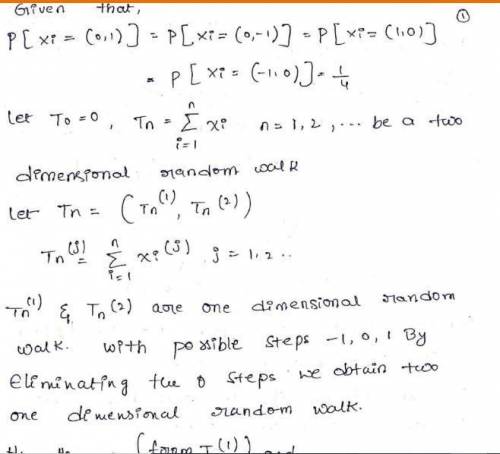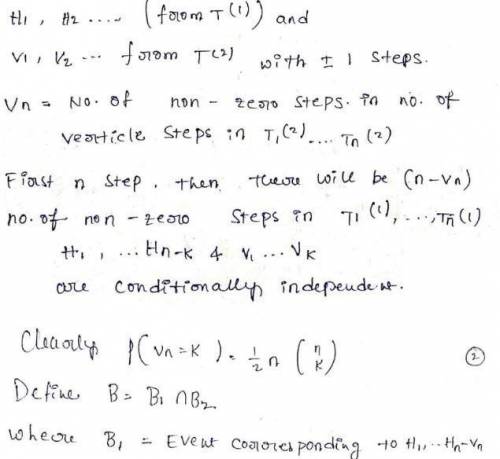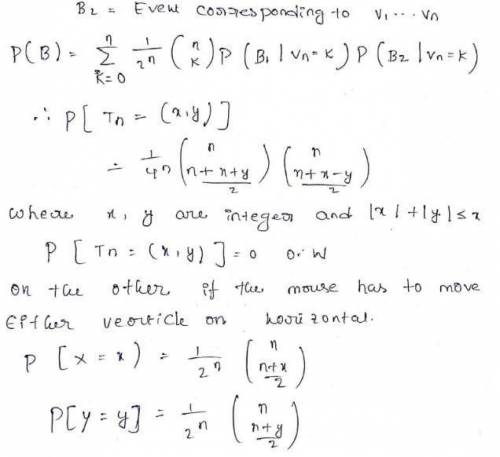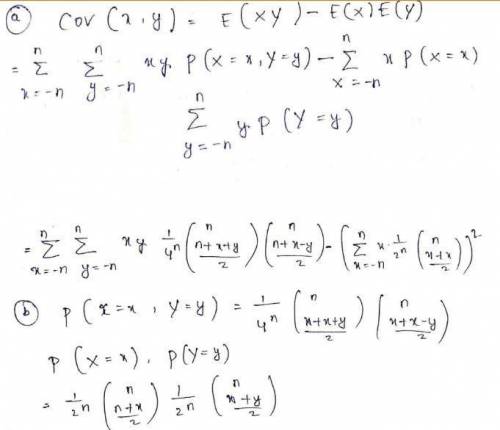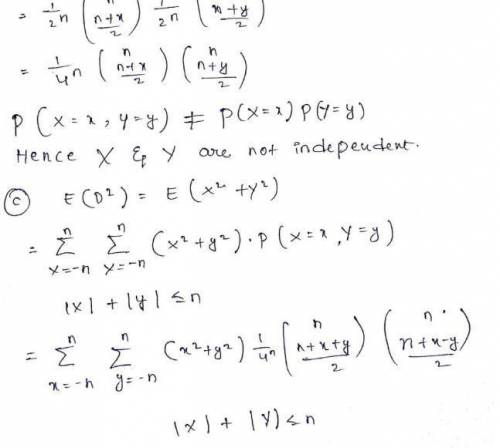
Mathematics, 21.04.2020 16:55 saadizak7098
A mouse walks in a maze that is an orthogonal grid made of corridors that intersect at crossings one foot apart, stopping at every intersection. Using coordinates (with units in feet), it starts at the origin, then moves equally likely up to (0, 1) or down to (0, −1) or right to (1, 0) or left to (−1, 0) by one unit until the next crossing. Then it stops, picks another random direction (up, down, right or left) equally likely and moves by another unit till the next crossing. Every time it stops, its position is a vector (a, b) where both a and b are integers. Scientists let the mouse walk n feet, after which its position is (X, Y ) and it is at distance D from the origin (D = √ X2 + Y 2).
a) What is Cov(X, Y)?
b) Are X and Y independent?
c) What is E(DP)?

Answers: 1


Other questions on the subject: Mathematics

Mathematics, 21.06.2019 17:00, trinityanne1738
Two streets intersect at a 30- degree angle. at the intersection, the are four crosswalks formed that are the same length. what type of quadrilateral is formed by the crosswalks?
Answers: 2



Mathematics, 21.06.2019 22:20, dontworry48
Which graph represents the given linear function 4x+2y=3
Answers: 1
You know the right answer?
A mouse walks in a maze that is an orthogonal grid made of corridors that intersect at crossings one...
Questions in other subjects:

Social Studies, 01.08.2019 10:30


Chemistry, 01.08.2019 10:30


Social Studies, 01.08.2019 10:30


Business, 01.08.2019 10:30

Physics, 01.08.2019 10:30


